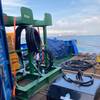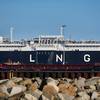Fitch: EU Container Port Growth to Slow
European container ports are unlikely to be able to maintain the strong growth rates of the past three decades, Fitch Ratings says.
Combined with the trend for ever-larger ships making fewer unloading stops, this makes risks highest for small- and medium-sized ports. These could be drawn into a price war in times of falling volumes, or could miss out on cargo even if they invest to accommodate larger ships. These risks are already factored in to our ratings in the sector. Since 1985 European container ports have averaged 6.5% annual growth in container throughput, or three to four times GDP growth, but this has been driven by trends that are unlikely to continue. In particular, the rise of Asia as a manufacturing centre was a major source of growth, but is likely to slow as exporters rebalance their economies to focus on domestic demand and as labour costs converge with Europe.
Much of the growth also came from goods that used to be shipped in general cargo vessels being switched to containers. This trend will probably continue for the next decade, but must eventually run out of steam. Fitch believes that as these drivers gradually diminish, container throughput growth will align with underlying growth in the supply and demand of transported goods. GDP, industrial production or private consumption may therefore be better indicators of future growth, all of which have tended to be between 1% and 3% in Europe over the last couple of decades. Ratings therefore include conservative growth assumptions, rather than a continuation of past trends.
These assumptions also vary between ports as changes in the industry, such as the introduction of larger ships and the trend for large retailers to concentrate cargo at a single port, polarise growth towards larger ports and reduce the market power of smaller ports. Larger ships tend to operate more efficiently with fewer stops, because of the time they take to unload. Competition among ports is also fiercer for containers than other cargo because their sizes are standardised and can be easily transported on to their final destination by road or rail. As a result, smaller ports could face a race to the bottom on pricing in times of shrinking volumes unless they build a role as feeder ports to the main hubs.
For a detailed analysis of industry trends and how they are factored into our ratings, see the report "European Container Ports: Growth to Taper Off" published today at www.fitchratings.com.












